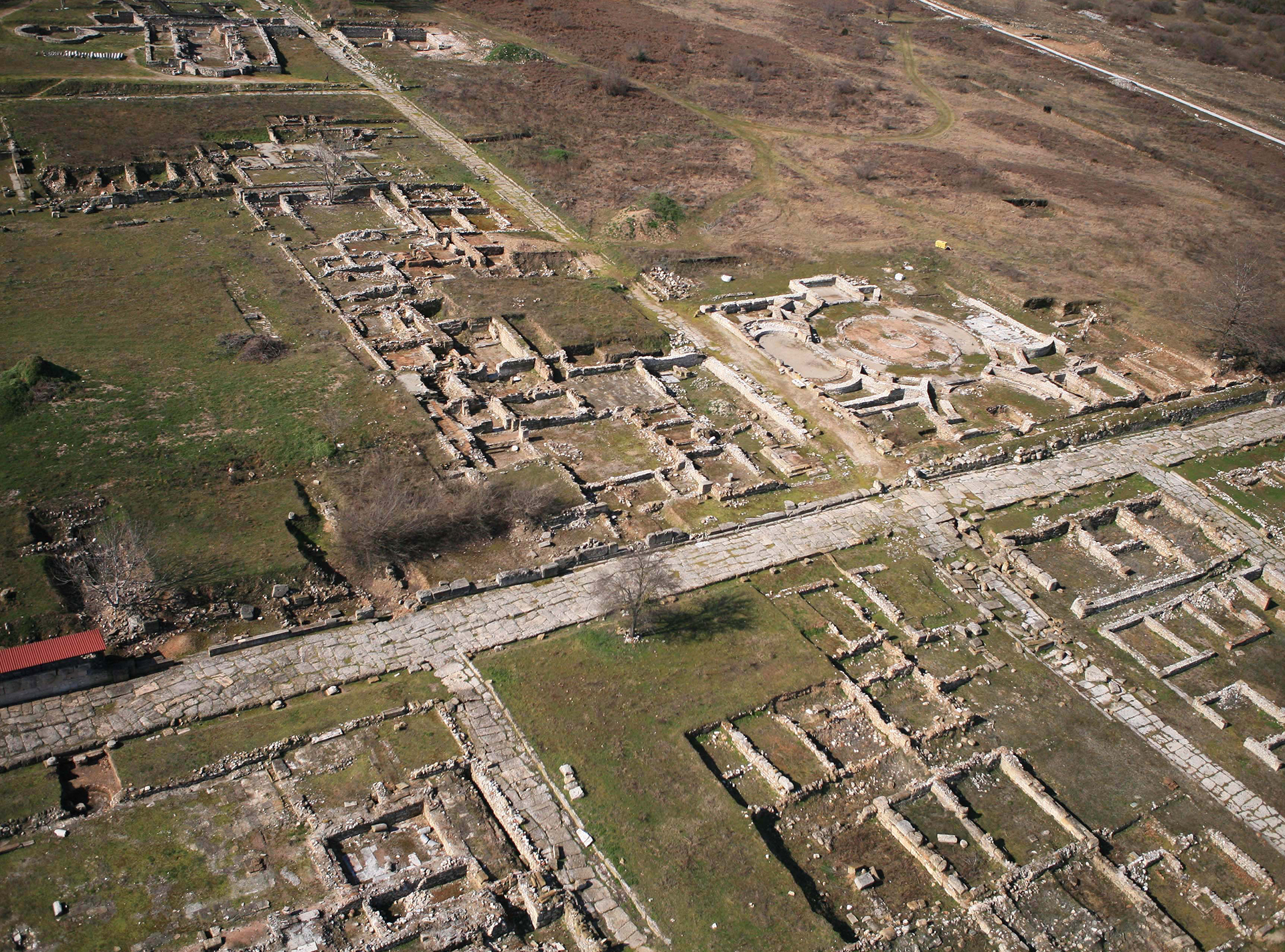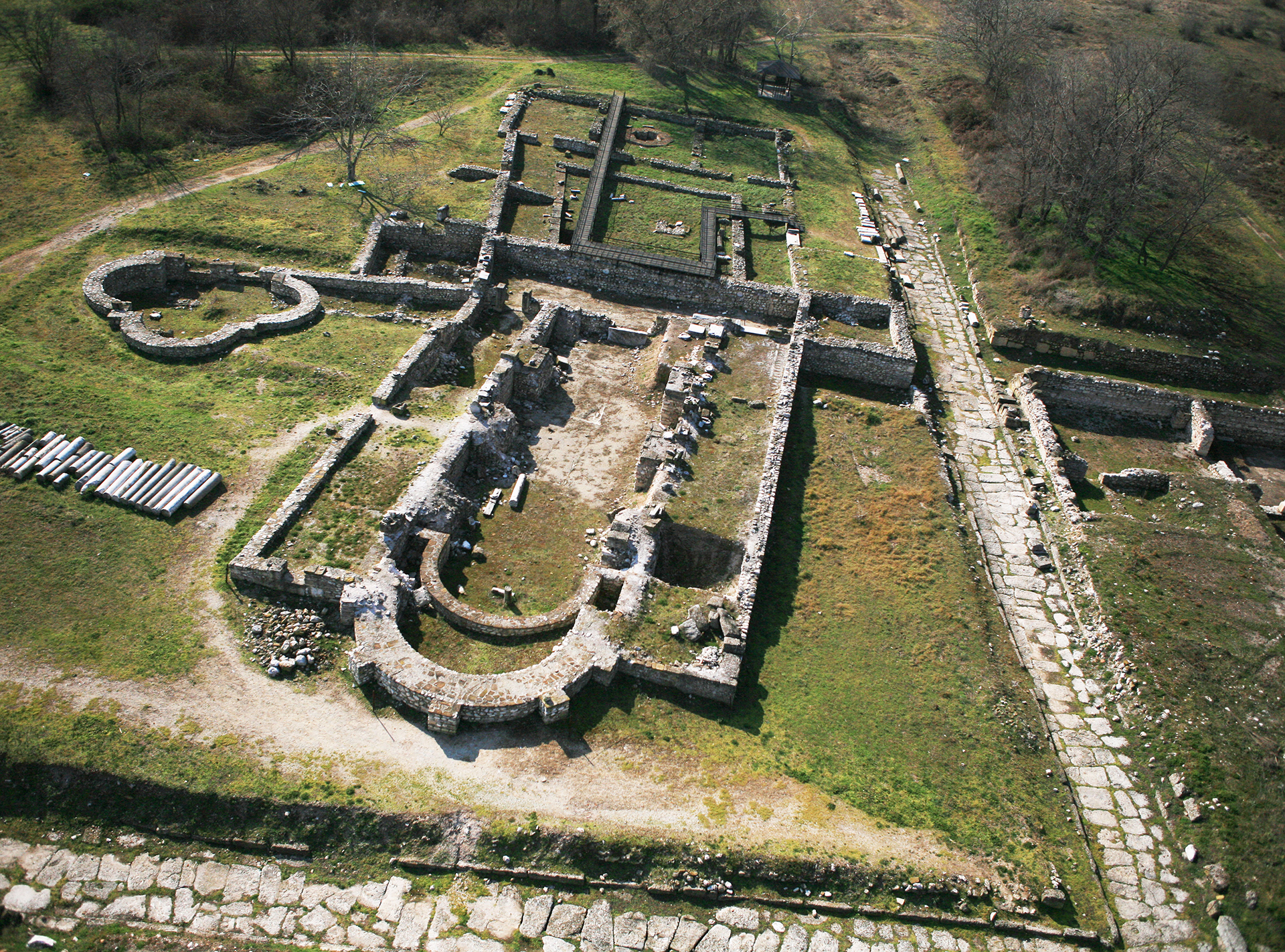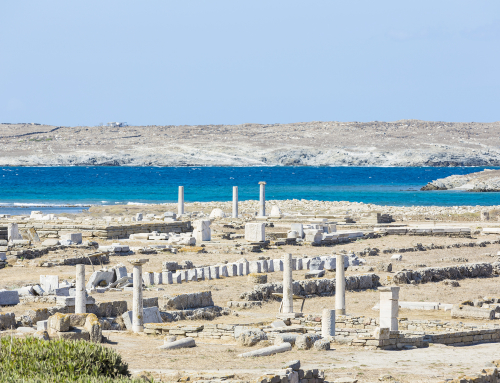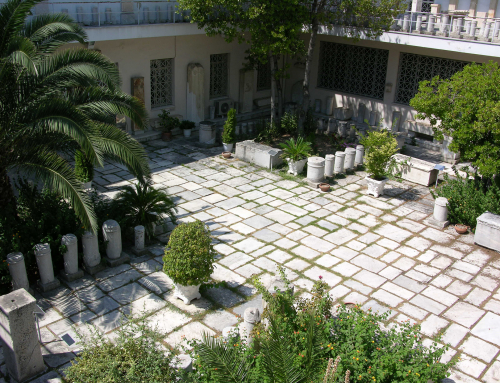The ancient Dion, in the region of Pieria, was a sacred site of the Macedonian kingdom. The cult of Zeus Olympiοs which developed in the area, transformed Dion into an important religious centre and a place of political promotion for the Macedonian court. From written sources, we are aware of the visits Alexander the Great made to ancient Dion and the grand sacrifices he offered to Zeus and the Muses. Inscribed texts discovered in the excavations serve as testimonies to the close relationship of the next Macedonian kings, such as Philip V and Perseus, with the ancient settlement.
After the dissolution of the Macedonian kingdom, the Romans founded a colony in Dion, under the name of Colonia Julia Diensis. The establishment of the Roman colony was undoubtedly a turning point in the history of the region, since its population was reinforced by Roman colonists from the Italian peninsula. The Roman colony of Dion flourished during the imperial period, particularly in late antiquity. Most of the visible ruins, reminders of the ancient city’s buildings, among which the so-called Episcopal Basilica that stands out for its monumental nature, belong in this period. Additionally, we know from the literary sources that during this period Dion became an episcopal see, which reinforces its importance as an urban centre for the wider region.
The Episcopal Basilica of Dion
Near the centre of the ancient city and at a short distance from the forum, the so-called Episcopal Basilica was built in the 5th century CE, with at least two successive building phases. The earliest phase corresponds to a three-aisled basilica, which was decorated with murals and mosaic floors. This building was replaced by a later three-aisled basilica, which was founded about 2 metres higher. It was enlarged by the subsequent addition of a peristyle court (atrium) with galleries and other auxiliary rooms. A font was discovered at the central room of the west wing, which may have served as a baptistery.








